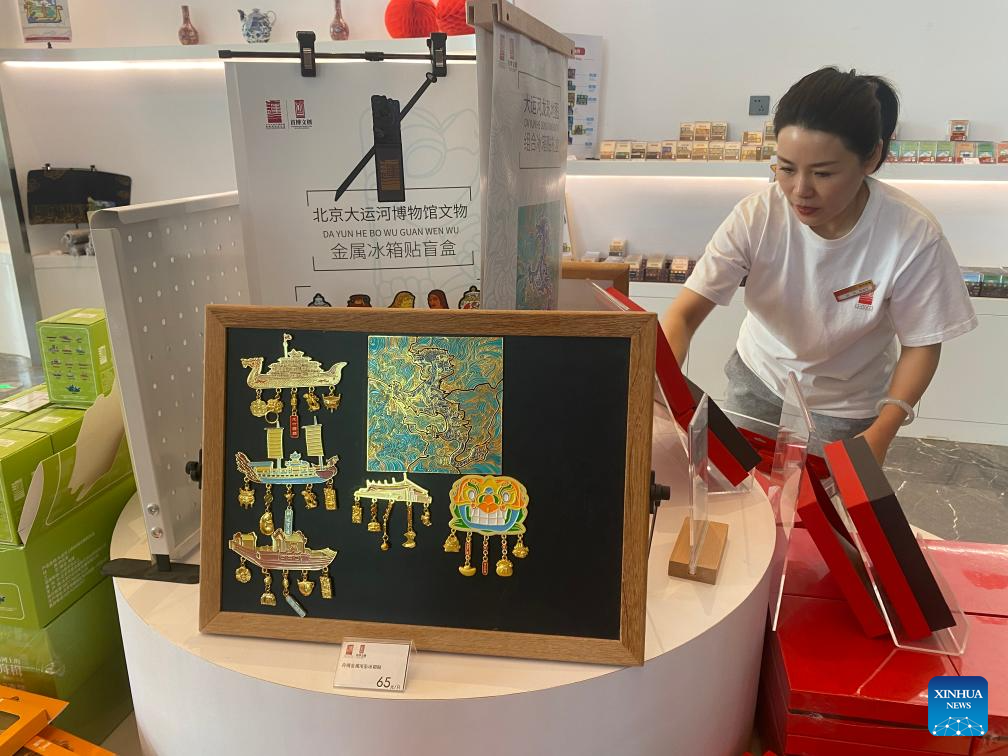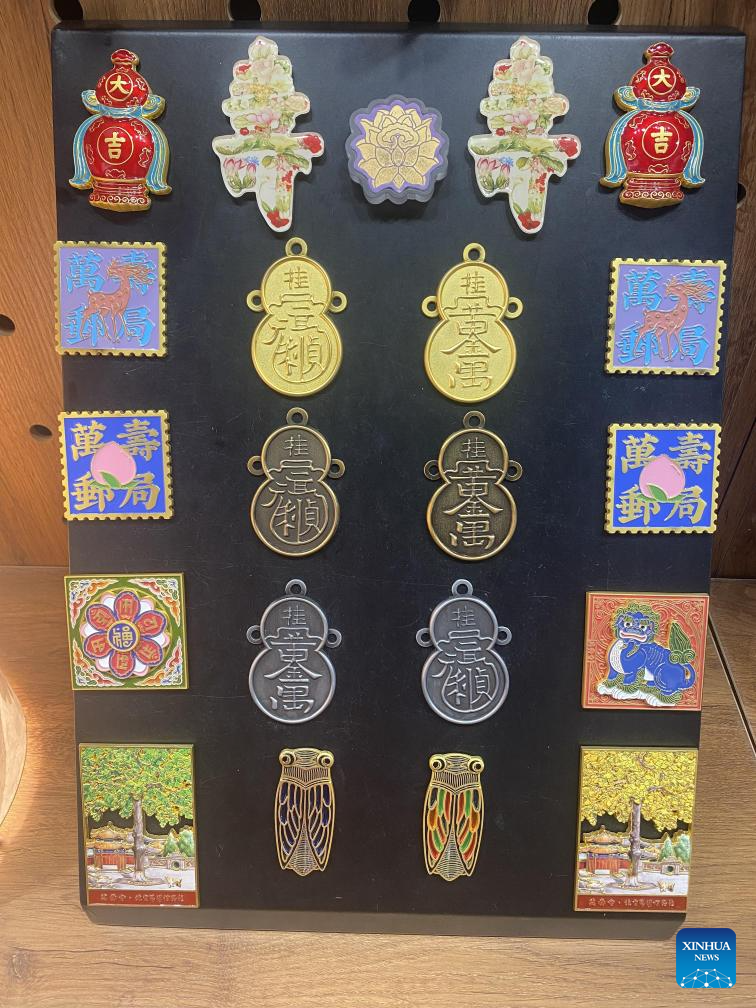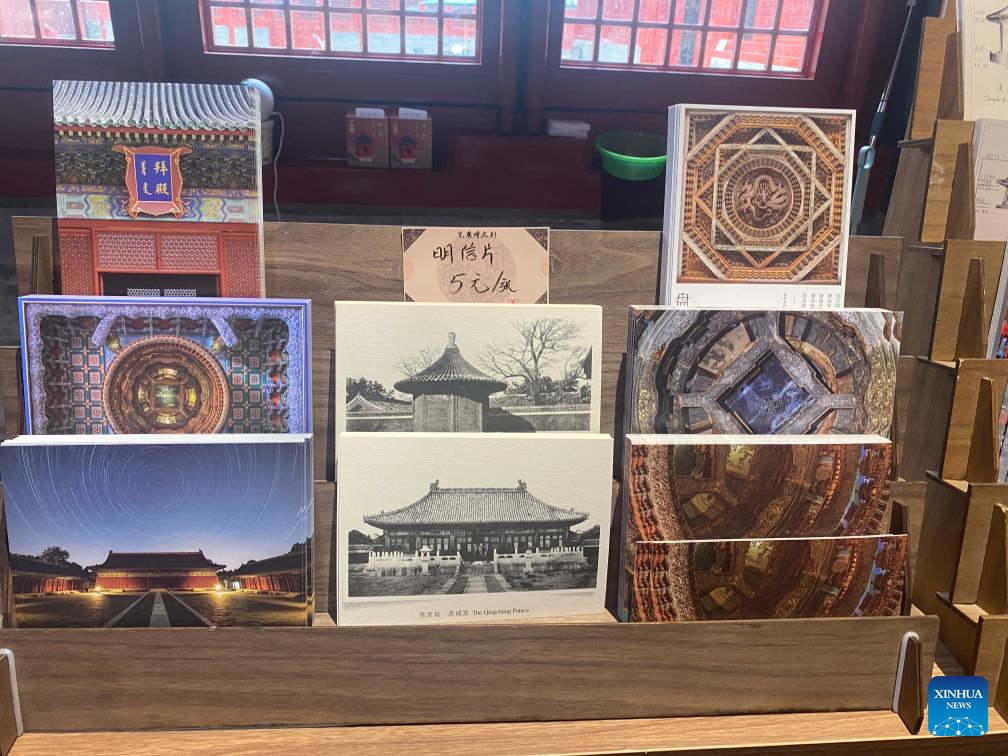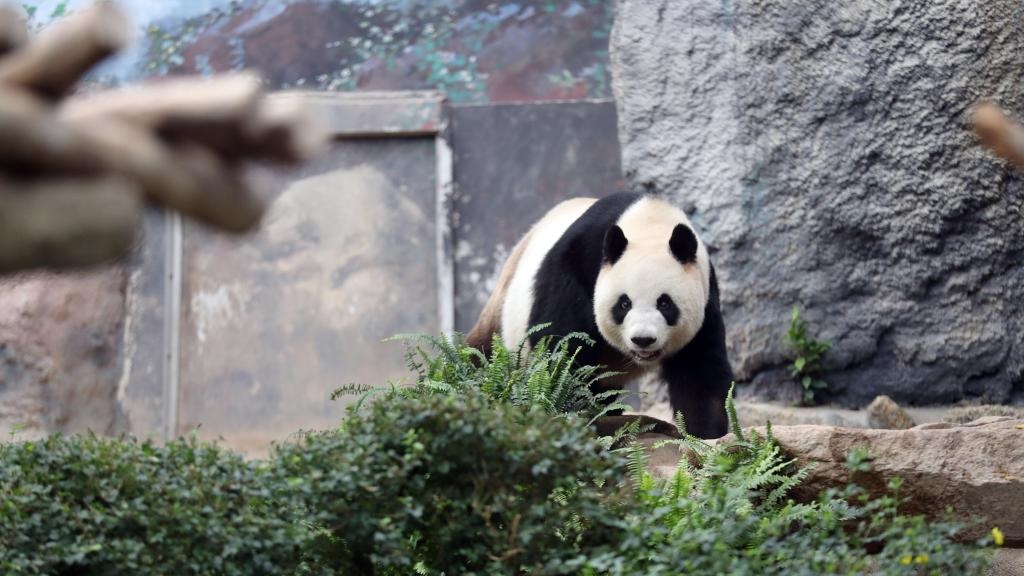Fridge magnet craze showcases China's vibrant cultural consumption

Fridge magnets are seen at the cultural and creative space of the Grand Canal Museum of Beijing in Beijing, capital of China, May 18, 2024. (Xinhua/Luo Xin)
BEIJING, Nov. 25 (Xinhua) -- At the National Museum of China, visitors queued up to catch a glimpse of the true appearance of the renowned empress's phoenix coronet, thanks to a fridge magnet.
This phoenix coronet, unearthed in 1957 in the underground palace of Dingling Mausoleum, part of the Ming Tombs in Beijing, is famous for its decoration featuring nine dragons and nine phoenixes. It boasts a distinctive design and exquisite craftsmanship, which vividly reflects the material and cultural standards of the mid to late Ming Dynasty (1368-1644).
"Fortunately, I managed to get one fridge magnet. There are two types: one made of wood and the other of metal. You can also scan a code on the metal magnet to experience the AR effect," said a Beijing resident surnamed Lin, who visited the museum recently.
In recent years, an increasing number of Chinese citizens have chosen museums and other cultural venues as must-visit destinations, igniting a trend of experiencing the charm of traditional Chinese culture.
Accordingly, cultural and creative products, represented by fridge magnets inspired by the original museum artifacts, have also become popular among young people.
On Chinese social media platforms like Xiaohongshu, refrigerators are no longer the only display board for fridge magnets. More and more young enthusiasts of Chinese traditional culture are also creating their own "fridge magnet museums" on magnetic suction boards.
A report released by a market research firm, Zhiyan Consulting, shows that the market size of China's cultural and creative products reached 16.38 billion U.S. dollars in 2023, up over 13 percent year on year.
"After the National Day holiday this year, almost all cultural and creative products with 'Zaojing' in the Xiannongtan Cultural and Creative Space were sold out, sparking a 'Zaojing craze,'" said Zhou Hairong, director of the cultural and creative product affairs from the Beijing Ancient Architecture Museum, highlighting the museum's renowned "Zaojing" ceiling decorations.
To better meet the audience's purchasing enthusiasm, the museum has introduced an online reservation system for the glow-in-the-dark "Zaojing" fridge magnet, with a daily limit of 400 and a purchase limit of one per person.
Data released by the National Bureau of Statistics shows that in the first three quarters of this year, the per capita expenditure on education, culture and entertainment in China was 2,295 yuan (about 319 U.S. dollars), a year-on-year increase of 10.1 percent, accounting for 11.1 percent of the total per capita consumption expenditure.
Zhang Jianshuo, an expert on cultural relics, believes that the "museum cultural and creative fever" reflects the increasing cultural confidence of people, and the exquisite appearance and rich connotation of cultural and creative products have promoted the upgrading of cultural consumption.
The well-preserved cultural heritage provides creative inspiration and abundant nourishment for the development of these cultural and creative products, Zhang added.
Huang Yi, deputy director of Beijing Stone Carving Art Museum, said that the museum's double-layer fridge magnets and the flowing sand refrigerator magnets, based on its Diamond Throne Pagoda and the surrounding ginkgo trees and persimmon trees, are among the most sought-after products, all currently out of stock.
"The Diamond Throne Pagoda has rich historical and cultural connotations and is a relatively well-preserved structure in the northern region. It is the most representative cultural symbol of the Beijing Stone Carving Art Museum," explained Huang.
The fever has also led to an increasing number of cultural relics protection institutions, cultural enterprises and the like increasing their investment in the development of cultural and creative products.
Recently, the museum collaborated with other cultural institutions to hold a cultural and creative market. During the market, not only were all the popular fridge magnets sold out, but also a record for daily tourist reception in recent days was set.
"In the future, we will accelerate the speed of introducing new cultural and creative products to meet the diverse cultural and tourism experience needs of tourists," Huang added.

Fridge magnets are seen at a cultural and creative space of the Beijing Art Museum in Beijing, capital of China, May 31, 2024. (Xinhua/Luo Xin)

Postcards are seen at a cultural and creative space of Altar of the God of Agriculture, in Beijing, capital of China, June 5, 2024. (Xinhua/Luo Xin)
Photos
Related Stories
Copyright © 2024 People's Daily Online. All Rights Reserved.









